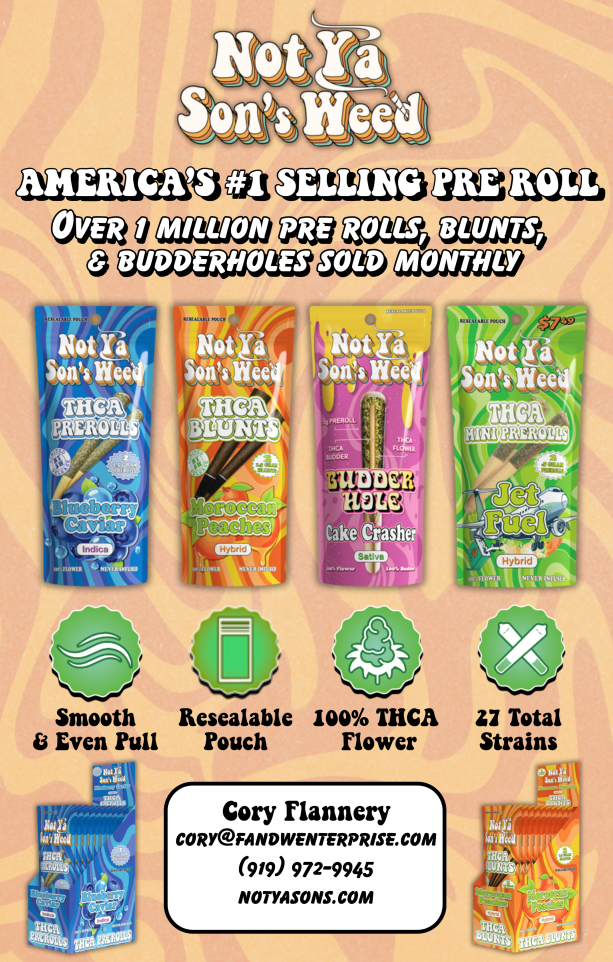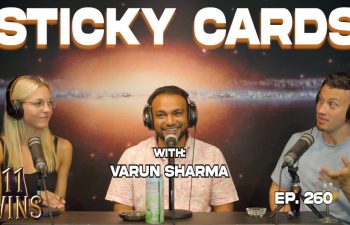You’ve probably heard of 7OH. It’s everywhere now, the new kid on the block blazing a trail in the kratom-adjacent market. Sales are off the charts.
And while it can be seen as an exciting new development in the world of pain management, it’s also giving industry insiders a lot of angst. Many are telling retailers to steer clear of this potentially valuable product. Whether this aversion is motivated by unfair, false associations with “gas station heroin” or unproven tales of people getting sick or addicted, the world of 7OH has gotten murky with potential myths.
To get some clarity on the issue, we spoke to Dr. Philip Gao, a scientist and strong believer in the use of 7OH, who has been convinced of its value from both clinical and personal experience.
Expert Support for 7OH
Dr. Philip Gao is the founder and director of KanPro Research and an expert in molecular biology, protein production, and biophysical characterization of proteins. Dr. Gao supports the use of metabolites from kratom like 7OH, and even mitragynine pseudoindoxyl, often referred to simply as “pseudo,” which is derived from 7OH itself, as novel forms of pain relief. He believes that, among many benefits, they’re safer and more effective ways to mitigate pain.
“7-hydroxymitragynine and mitragynine Pseudoindoxyl, which are natural metabolites of kratom, are highly efficacious harm reduction tools and have scientifically demonstrated to lack the deadly side-effects associated with opioids,” he offers.
Dr. Gao explains that when someone takes kratom, 7OH is formed through liver metabolism. This enhances effectiveness and may reduce toxicity. Of course the amount matters, and when 7OH is synthesized in a lab, not through the body, it has to be dosed carefully.
The value of isolating 7OH is because it’s an opioid agonist that’s more effective than morphine–and according to Dr. Gao, without the serious adverse effects.
“A recent clinical study involving the oral consumption of dried kratom leaf by humans has shown that the mean blood concentration ratio of 7-hydroxymitragynine to mitragynine following oral administration ranges from 0.21 to 0.31,” Dr. Gao points out, “indicating a significant portion of mitragynine is converted to 7-hydroxymitragynine naturally within the human body.
“They [kratom products] are all opioid receptor binders,” says Dr. Gao. “The kratom alkaloids, mitragynine, bind to a different place in a different manner. So the interaction is slightly different. It’s a big receptor; it binds it, and it turns off, and you don’t feel the pain.”
Dr. Gao explains that 7OH’s affinity to the mu receptor indicates that it may be 3–10 times more effective than morphine, though absolute numbers like this can be misleading. There are many factors that can affect efficacy.
“That [3-10x efficacy] is measured by the near affinity of a mu receptor for 7OH compared with the morphine. And then pseudo has 10 times more [affinity] than the 7OH.”
Less is More
As we know from other products, like cannabis, we tend to vaunt the whole-spectrum product, the entire leaf, and enjoy the “entourage” effect. This is valid with good-quality kush, and a lot of ink has been spilled debating pros and cons of products with a high percentage THC%.
But in this case, the pure form of the molecule from the kratom leaf is, according to Dr. Gao, a pure benefit. Like, for example, if you craved nicotine, you could skip the cigarette and slap on a nicotine patch.
Dr. Gao insists this “solo” effect is worth more than use of the entire kratom leaf, which has its value in giving us mitragynine in the first place. But by isolating the most effective ingredients in kratom, we give the world an incredibly effective compound that avoids a lot of the problems associated with traditional opioids, as well as excesses within the kratom leaf itself.
A Challenging but Hopeful Future
Unfortunately, kratom exists in a legal and marketing limbo that leads to many negative associations about the product. For example, a lot of people falsely associate it with synthetic opioids, and there’s varying legislation proposed and enacted that could help or hurt its cause.
Knowing what we know about kratom, we should be encouraging studies on its metabolites like 7OH and pseudo, and easing the opioid epidemic with off-ramps that have way more benefits and fewer adverse effects. The day-to-day evidence for its effectiveness is pouring in.
And with scientists like Dr. Gao leading the way, the clinical case is becoming even stronger.
Absorbed Discovery
Dr. Gao Recounts How a Lab Accident Led to a Battlefield Treatment
On June 30th, 2023, as I was clearing out my belongings on the final day the University closed the Protein Production Core Lab, I unexpectedly encountered a change in my health. While lifting a large box, a sharp pain radiated from my back to my right heel. At first, I dismissed it, but within two weeks, the pain escalated to an unbearable level whenever I stood or walked for more than ten minutes. The following two months were a tormenting ordeal. Each step was accompanied by excruciating pain that traveled from my hip to my heel, punctuated by random stings reminiscent of bee bites in my leg. Though lying down or sitting offered only temporary relief, it left my leg numb but mercifully pain-free.
A visit to my doctor confirmed that I had sustained an L5 lumbar spine injury, resulting in my right leg shortening by an inch as it tried to compensate for the pain. Despite the doctor’s advice, I opted to avoid pain medication to prevent potential dependency and instead began physical therapy, which yielded minimal relief.
In August, I started a collaborative project with American Shaman. Vince Sanders, the company’s CEO, provided me with a compound called 7OH. One afternoon, while I was deeply engaged in lab work, I realized that I had been moving around pain-free for nearly three hours. It dawned on me that I had inadvertently absorbed some 7OH onto my skin and into my bloodstream. This serendipitous discovery ultimately led to the development of a pain relief medical patch, which was subsequently tested in a pilot study on the battlefield in Ukraine.
I immediately requested one of my senior staff scientists to conduct a cell-based toxicity study to measure the LD50, defined as the lethal dose at which 50% of the population is killed within a specified time. The LD50 for the 7OH from American Shaman was found to be between 250 µg/ml and 25 µg/ml for human HEK293 cells (equating to approximately 1060 mg to 106 mg/kg body weight). This range is significantly higher than that of any standard medication. We are currently conducting further cell and animal studies to ensure the safety of the materials provided by American Shaman.
For over a year, I have intermittently used the 7OH patch to alleviate severe pain. Additionally, I experimented with oral dissolvable strips, which not only mitigated my pain but also improved my sleep quality. Gradually, my pain has subsided, and I no longer require these treatments. My mobility has markedly improved; I can now walk up to five miles a day. I consider myself fortunate, as enduring such intense pain could easily drive one to desperate measures or lead to dependency on pain medications and their associated consequences.





















